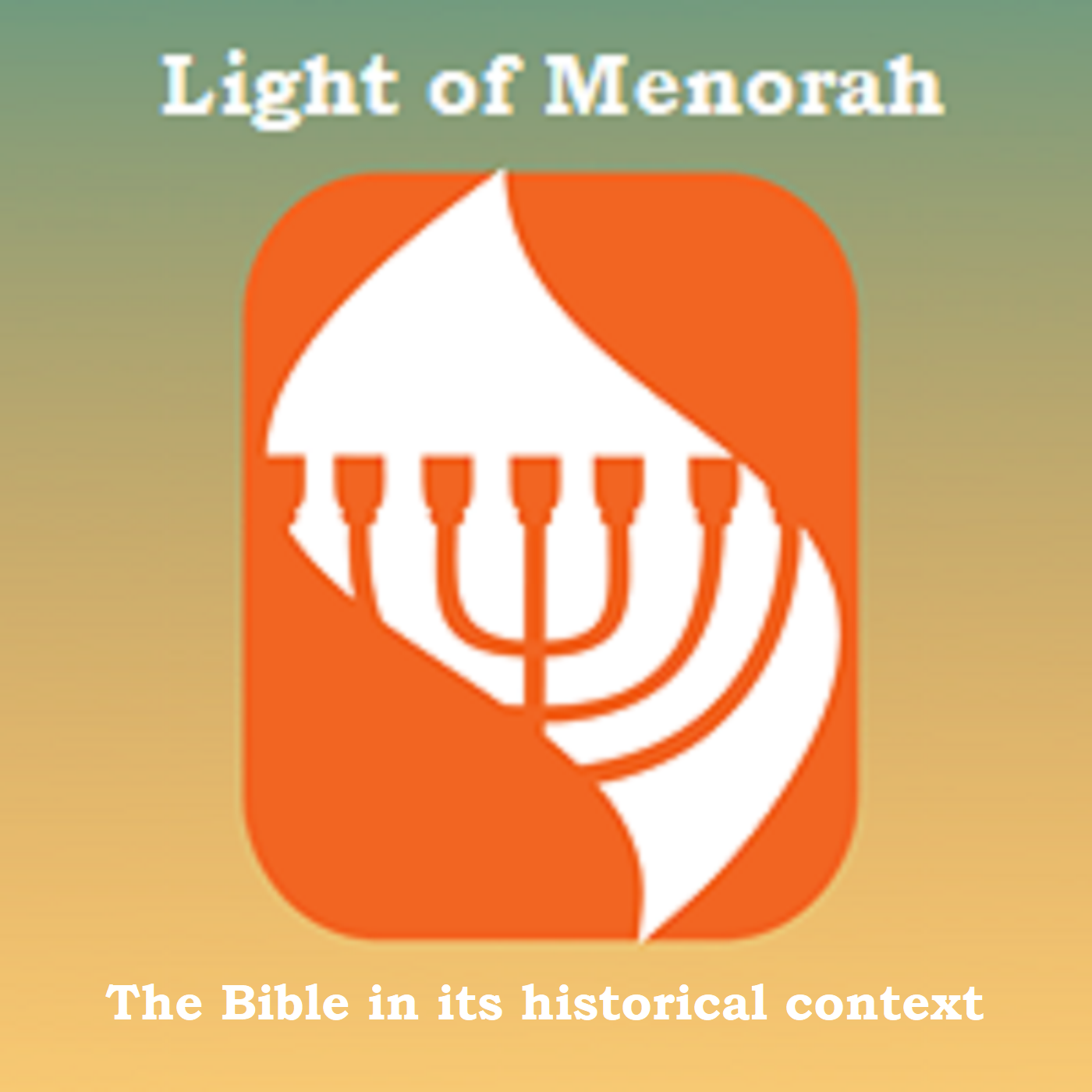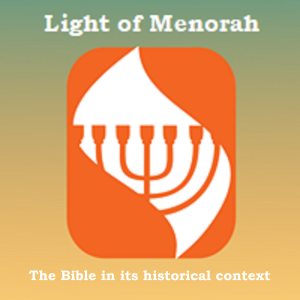
27.1K
Downloads
380
Episodes
The study of the Bible in its historical context - with a focus on the archaeology, history, geography, customs , culture, and even the languages of the ancient Middle East. WE ask what did they understand THEN - the original intent of the Lord - so that we can expand and enrich our understanding NOW and thus become true disciples of Adonai Yeshua as in John 8:31-32.
Episodes

Friday Apr 18, 2025
Truth Nugget 29 - WHERE IS THE GARDEN OF GETHSEMANE?
Friday Apr 18, 2025
Friday Apr 18, 2025

A Place Called Gethsemane
The Passion Week account of Jesus happens during the annual feast of Passover for the Jews. This is one of three times that every Jew was required to travel to Jerusalem to celebrate the feast. Jesus being a devout Jew went to the city as well not only for the feast but to complete His awesome mission. Not every Jew in the world could possibly come but it is estimated that 1 to 1.5 million people would be in the city during Passover. The picture below from the Temple Institute in Israel shows the 1000’s entering the city at Passover.

Since Jerusalem was a city of perhaps an estimated population 35,000 to 80,000 depending on the archaeologist, it is clear that the city could not handle such a dramatic increase in population. Every extra room was rented and those not finding rooms camped out on the hills nearby or they sought lodging in nearby towns like Bethlehem or Bethany. Many of those who camped out in the hills around Jerusalem would more than likely camp on the beautiful slopes of the surrounding hills like Mount of Olives east of Jerusalem. (Vander Laan 177)
After Jesus and His apostles had completed the Passover Seder meal they went to the Mount of Olives to a place called Gethsemane at the Mount of Olives in an olive grove. The account can be found in Matt 26:36, Mark 14:32, Luke 22:39 and John 18:1. The word Gethsemane is the English transliteration of a Greek word which was based on two Hebrew words. (Picture below from Permaculture Research Institute, is a good idea of what the side of the Mt. of Olives would have looked like in Jesus’ day).

The first was GAT. The Hebrew word stands for a press. The second word is SHEMIN which means oil – like olive oil. The plural in Hebrew is Sheminim. Thus, Gat Sheminim means a press for oils and referred to in most cases an olive press. (Vander Laan 178)
Today in Israel one can visit Tel Maresha in the Negev. At this tel archaeologists found the remains of a perfectly intact olive press. Olive presses were built in caves close to an olive grove. The cave itself would have “windows” cut into the walls and an air shaft in the roof. These “windows” and the airshaft were used to control the airflow and temperature since processing olives required a certain temperature range. The olives themselves were processed by first smashing them with a millstone to break open the skins. The smashed olives were then put into special porous bags and crushed under the weight of huge weighted down cypress logs in the main press room. The olive oil would run down into a basin which had a drain directly into a collection jar below the pile of bags of crushed olive pulp. The jar of oil would be sealed when filled and made ready to be taken to market. (Vander Laan 178) The picture below is of the Gat Sheminim at Tel Maresha Israel courtesy of Israel Travel Inc.

Where is this exact location of where Jesus prayed and is there a connection to the Gat Sheminim and the word Gethsemane? As far as location is concerned, “Christian tradition has always placed Gethsemane on the lower slopes of the Mount of Olives – though today the Roman Catholic and Russian Orthodox churches hallow different sites.” (Reader’s Digest 186) Recently, however, archaeologists working at the base of the Mount of Olives made a very interesting discovery. “A cave nearby was recently identified as containing an ancient olive press. Early 6th century tradition supports this cave as being Jesus’ Gethsemane.” (Vander Laan 179) Moreover, no archaeological evidence nor evidence from ancient descriptions of the city of Jerusalem and its surroundings as ever found a place called the Garden of Gethsemane. This name is a modern label attached to an area that tourists would come to experience what the place called Gethsemane in the Bible was like. “The designation ‘Gethsemane’ does not occur outside the gospels. Even Luke 22:39 omits the name, using the more general description, ‘the Mount of Olives.’”(Flusser 251) What we know for a fact is that the Mount of Olives had an olive grove and near olive groves one will find a Gat Sheminim or an olive press.
One might conjecture the following based upon the fact that in the Jewish culture God taught His people difficult theological truths with the use of pictures – as in the case of the word tekton and 1 Peter 2:4-6. Jesus went to the Mount of Olives and entered the gat sheminim, or the olive press, to find a secluded place to pray. He would prefer the seclusion of the press since there were many possible pilgrims camping out on the slopes of the hill for Passover and the press would be located in a quiet cave. Perhaps Jesus knew the owner and was able to gain private access to the olive press. Again, all of this is conjecture but it is based on the archaeological evidence that is factual.
In the gat sheminim, or in a location very close, we know that Jesus prayed and was in deep stress and anguish. In the account found in Luke 22:44 Jesus’ sweat was like drops of blood. What is intriguing about this picture is a verse found in Isaiah 53:5. This verse for us Christians says He was crushed for our inequities. When one makes the connection between the discovery of the olive press and how it was used and these verses it would seem that God is showing us how Jesus was crushed – like an olive crushed by the weight of a huge cypress log with heavy weights attached. It would seem that God Himself is making use of the archaeological discoveries to open up the world of the Bible to us so that its meaning is enhanced. Do we know for a fact that Jesus was in the olive press or the Gat Sheminim? No we do not. But, these discoveries perhaps are given to us to intensify our understanding of His word and the picture of the gat sheminim can simply be used to help us understand the scope of Jesus’ stress and anxiety that horrible night.
Works Cited
* That the World May Know Set 3 Ray Vander Laan c 1996 Focus on the Family Publishing Colorado Springs CO
* Egypt and Bible History: C. Aling Baker House book Grand Rapids MI c 1981
* “Reader’s Digest Atlas of the Bible”, C 1981 Reader’s digest, Plesantville, NY
* “Jesus”, David Flusser, Magnes Press, Hebrew Univ., Jerusalem, 1998
* Josephus WAR 5:141
* “First Easter: The True and Unfamiliar Story”, Paul L. Maier, Harper and Row, NY 1973.
* Archaeology and the Bible: The Best of Biblical Archaeology Review, “The Garden Tomb: Was Jesus Buried Here?”, Gabriel Barkay, Vol. II, Archaeology in the World of Herod, Jesus and Paul.
Rev. Ferret - who is this guy?
(John & Robin somewhere in the Middle East)

What's his background? Why should I listen to him? Check his background at this link - https://www.dropbox.com/s/ortnret3oxcicu4/BackgrndTeacher%20mar%2025%202020.pdf?dl=0

No comments yet. Be the first to say something!